July 1, 2024
By Blair Blanchette, Virginia Conservation Assistance Program Coordinator, Virginia Association of Soil and Water Conservation Districts
“What we’re going to look for is the spread, right? And disappearance.” Dave Hirschman says as two technicians pour water over a paver-covered parking area.
Air bubbles up at the seams between pavers. The water spreads about two feet from the pouring. “Not getting to the end [of the pavers], is it?” Dave points out to the Soil and Water Conservation District employees.
Fifteen Soil and Water Conservation district employees are gathered around the pavers for the , field component of the specialized Virginia Conservation Assistance Program (VCAP) training. This training was developed by the Chesapeake Conservation Landscaping Council (CCLC) and Hirschman Water & Environment, LLC, in conjunction with the Chesapeake Bay Landscape Professional (CBLP) program.
The demonstration, in Lynchburg, VA, provided district employees the opportunity to witness how permeable pavers can infiltrate runoff rather than convey it. VCAP seeks to improve water quality by reducing runoff volume, mitigating erosion, and reducing pollutant loads in runoff.
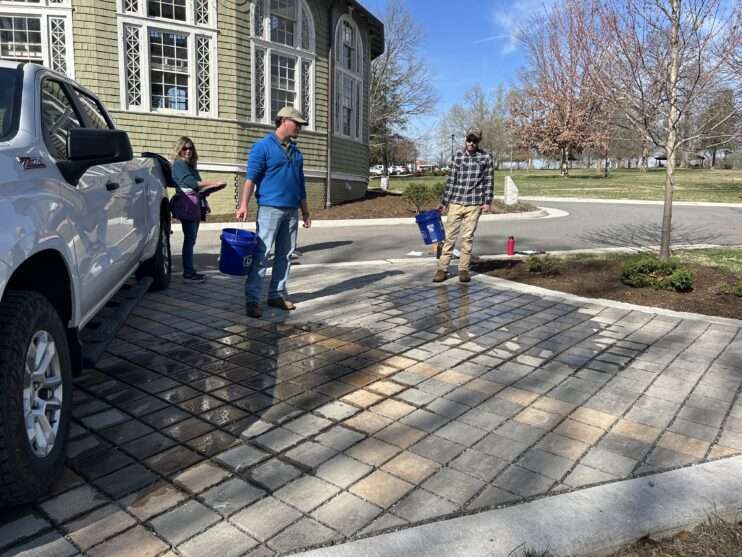
What isn’t obvious in the demonstration is the slight gap between pavers, allowing the water to reach a below-grade reservoir of #2 and #57 stone. The “runoff” spreads across the lot, sinks between the pavers, and is reintroduced into the groundwater with fewer pollutants than at the surface.
Active demonstrations like these solidify the knowledge and skills that district employees need to administer VCAP. VCAP offers financial assistance to homeowners, schools, businesses, and places of worship installing stormwater management practices like permeable pavers, rain gardens, conservation landscaping, cisterns, as well as living shorelines, green roofs, and bioretention.
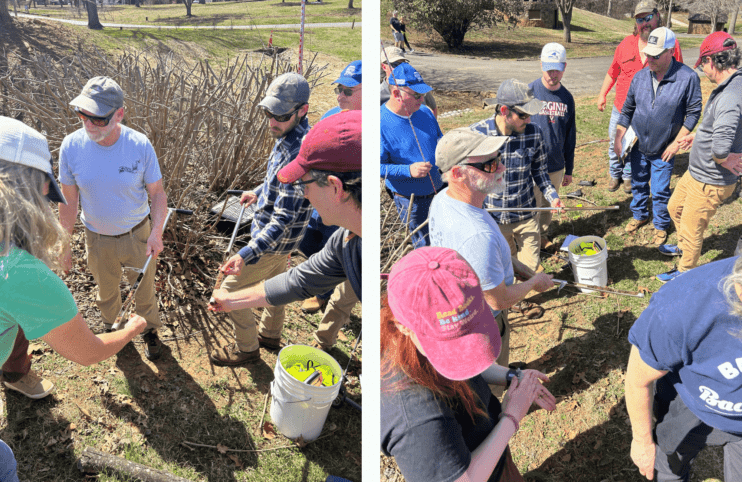
While districts have a long history of providing technical assistance to farmers and producers, VCAP is a new program. Thankfully, the Chesapeake Conservation Landscaping Council’s CBLP program already had the framework to train professionals on green infrastructure design and installation. VCAP hinges upon district employees understanding the site requirements and design specifications of eligible best management practices.
Siting, BMP selection, assessing designs, and developing applications are all duties of the District employees. It takes training, practice, and more practice to confidently provide technical assistance on storwmater BMP’s–and this course provides one step toward building confidence.
Although not as exciting to photograph, this course included six hours of virtual training prior to entering the field. Much of the BMP selection process also begins virtually; district employees use Web Soil Survey to identify potential restrictions like a seasonal high water table or bedrock, and use local GIS to find utilities and assess topography.
During the online training district employees also practiced communicating with landowners. Although we’d like the VCAP application process to be painless, often it requires explaining the nature of maintenance, the lifespan requirements of the practice, and other nitty-gritty details. These professional communication skills were not neglected in this role-playing exercise, and we again thank Dave Hirschman for his creative and funny “sample” conversations.
VCAP requires that landowners either “DIY” their designs or hire an outside contractor. It is upon the district staff to assure that the designs meet VCAP’s standards–particularly sizing of infiltration practices like rain gardens. This training gave district staff a few real-life examples of rain garden sites and asked that they assess the drainage area, determine the pervious and impervious drainage, and then calculate the appropriate rain garden size. This is all for the benefit of water quality, as VCAP practices must be sized to treat a standard storm–1” of rainfall.
In the afternoon, attendees visited Riverside Park and conducted a spot check on a bioretention and permeable paver parking. One important component of planted practices is the use of native plants. Native plants are adapted to survive in the local climate and provide habitat to native pollinators. Although plants were still dormant, district staff did work to identify the species present–including a Calycanthus floridus (Carolina allspice).
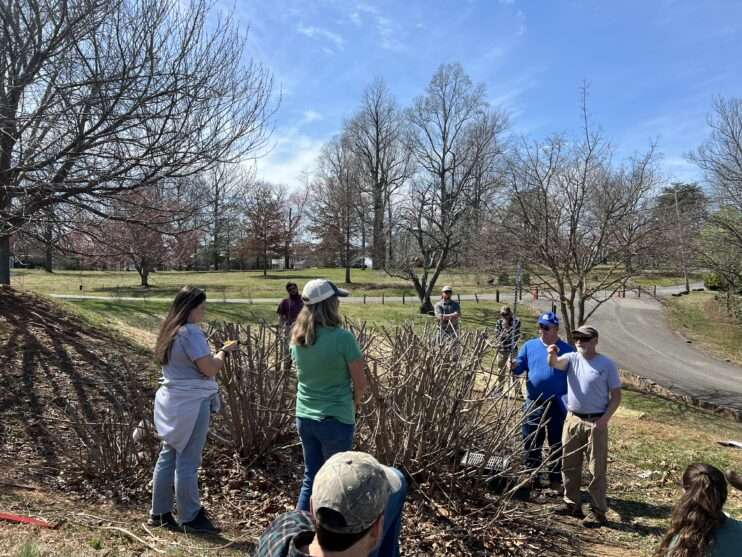
District staff finished the program with a visit to two of Randolph College’s bioretention basins. These unique basins abutted an academic building, which required the use of impermeable liners against the building, which were occasionally visible, lending a unique opportunity to discuss setback requirements and protective measures when installing infiltration-style practices.
100% of the attendees said they would recommend this training to their colleagues. One even shared “As a new employee of SWCD, it was well worth the time to be a participant especially by attending the field day in Lynchburg.”
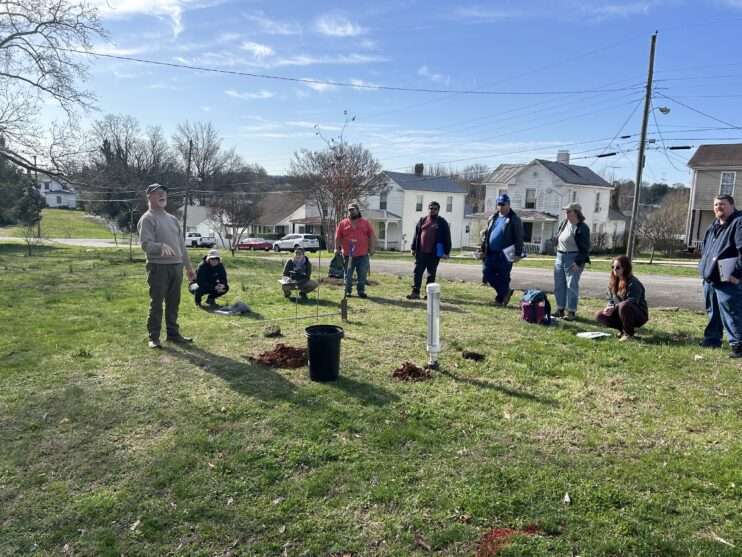
We at the Association cannot thank CCLC , Dave Hirschman, and Lynchburg Water Resources enough for developing this unique training program for Soil and Water Conservation District employees. Additional thanks to engineer and CBLP Level 2 instructor, Chris Sonne for joining us in Lynchburg.
To learn more about VCAP, visit the Association of Soil and Water Conservation Districts website. And to learn more about CCLC trainings, visit “Our Programs” on the CCLC website.
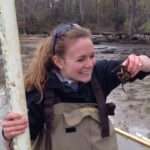
Blair Blanchette is the Virginia Conservation Assistance Program (VCAP) Coordinator. VCAP is a financial assistance program for residential scale green infrastructure and is a program of the Virginia Association of Soil and Water Conservation Districts. She currently serves as CCLC’s board secretary.


